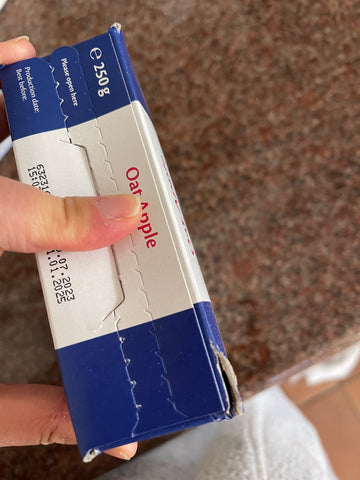Ever found a dented formula can or a box with a crease? As parents, we all want the best for our little ones, and damaged packaging can raise concerns. But here's the scoop: minor dents and scratches on formula containers are usually no biggie. However, there are some types of damage to watch out for. Keep reading to discover how to spot any problematic cans or boxes, ensuring you can feed your baby worry-free. Rest assured, we're dedicated to carefully packing our formula to keep it fresh for your little bundle of joy!
What You Should Know About Dented or Damaged Infant Products
It's completely understandable to worry about safety when it comes to damaged infant products. But rest assured, minor dents and damages are nothing to fret over. Still, it's always good to be mindful of a few key points.
Dents in cans and damages on boxes aren't an issue as long as they're not punctured, and no air is exposed within the canister or foil bag for boxed formulas. Even if the canister or box lid is broken, it's still safe to use as long as the foil seal remains intact and no air is exposed within. However, if you do encounter such damage, please take a photo and reach out to us at care@formuland.com for assistance.
Spotting Various Types of Damage: A Guide for Parents
It's crucial to distinguish between a dented can and one with significant damage when dealing with creased or dented cans and boxes. While a minor dent may not affect safety, substantial damage could pose risks to one's well-being.
Here are some key features to consider when identifying damage:
Severely Damaged: Containers (canister or foil bag for box formulas) that have suffered significant damage should not be consumed as they may pose health risks. Examples of severe damage include punctures in the packaging, which can lead to formula leakage.



Minor Damaged: If a can or box formula is dented, you may notice a slight dent or crease on one side, top, or bottom of the container. However, the can will still be intact despite the dent, although there might be some minor unevenness in the packaging.



Can You Safely Use Formula Milk from a Severely Damaged Can or box?
We want to ensure the best for your little one. If you notice puncture holes, air bulges, visible leaks, or rust on the can of formula milk, it's best to discard it.
Since formula milk is designed for infants with developing immune systems, it's crucial to avoid giving them contaminated formula. Here are some friendly guidelines to keep in mind:
- Please avoid using formula milk cans that show signs of severe damage, such as puncture holes, air bulges, formula leaks, or rust. These issues could potentially compromise the safety of the product.
- Be sure to check the expiration date on the can to ensure it's within the appropriate timeframe. Expired formula milk should not be consumed. Remember that European date formats may differ from American date formats!
- Even if the packaging seems intact, it's crucial to follow the manufacturer's preparation and storage instructions to guarantee the formula's safety.
Severely damaged products that can still be used
- Broken Lids
- Severe dents and creases on boxes
As long as there are no signs of severe damage such as puncture holes, air bulges, formula leaks, or rust, the product is considered safe to use. For instance, while the products below may have visible damage, they do not exhibit any of these compromising factors, making them safe for consumption.
Additionally, if the canister lids are broken but the foil seal underneath remains intact and there is no exposure to air within, the product is still safe for use.






If you're hesitant about feeding this product to your infant, please don't hesitate to contact us at care@formuland.com to initiate a return.
Did Formuland deliver a formula with dents or damages?
All our products leave our warehouse in pristine condition, exactly as we receive them from our manufacturers – no dents, creases, or damage.
Why have some packages arrived damaged?
- Since the package is shipped internationally, it may undergo inspection at the border. Officials may open the box and examine its contents.
- They may occasionally repack the cans in a different order than we originally arranged.
- A dent may occur if the cans inside the box are not positioned in the same way as when we originally packaged them at our warehouse.
This is why some items may show damages, even if the outside box appears intact. If you received severely damaged cans, please reach out to us, and we'll work with you to find a better solution.
Navigating Damaged Baby Formula: Safety Tips and Considerations
In conclusion, when assessing dented cans and creased boxes, it's crucial to evaluate the severity of the damage. Minor dents are generally safe for consumption, but if the damage is substantial or the product is leaking, it's advisable to discard it. Familiarizing yourself with different types of damage and their implications ensures you choose the best and safest products for your baby.
Moreover, if you receive a package with a damaged box, such as one labeled as 'FedEx damaged box,' it's essential to carefully inspect the contents before use. This ensures the products inside remain in proper condition, posing no risks to your baby's health.
